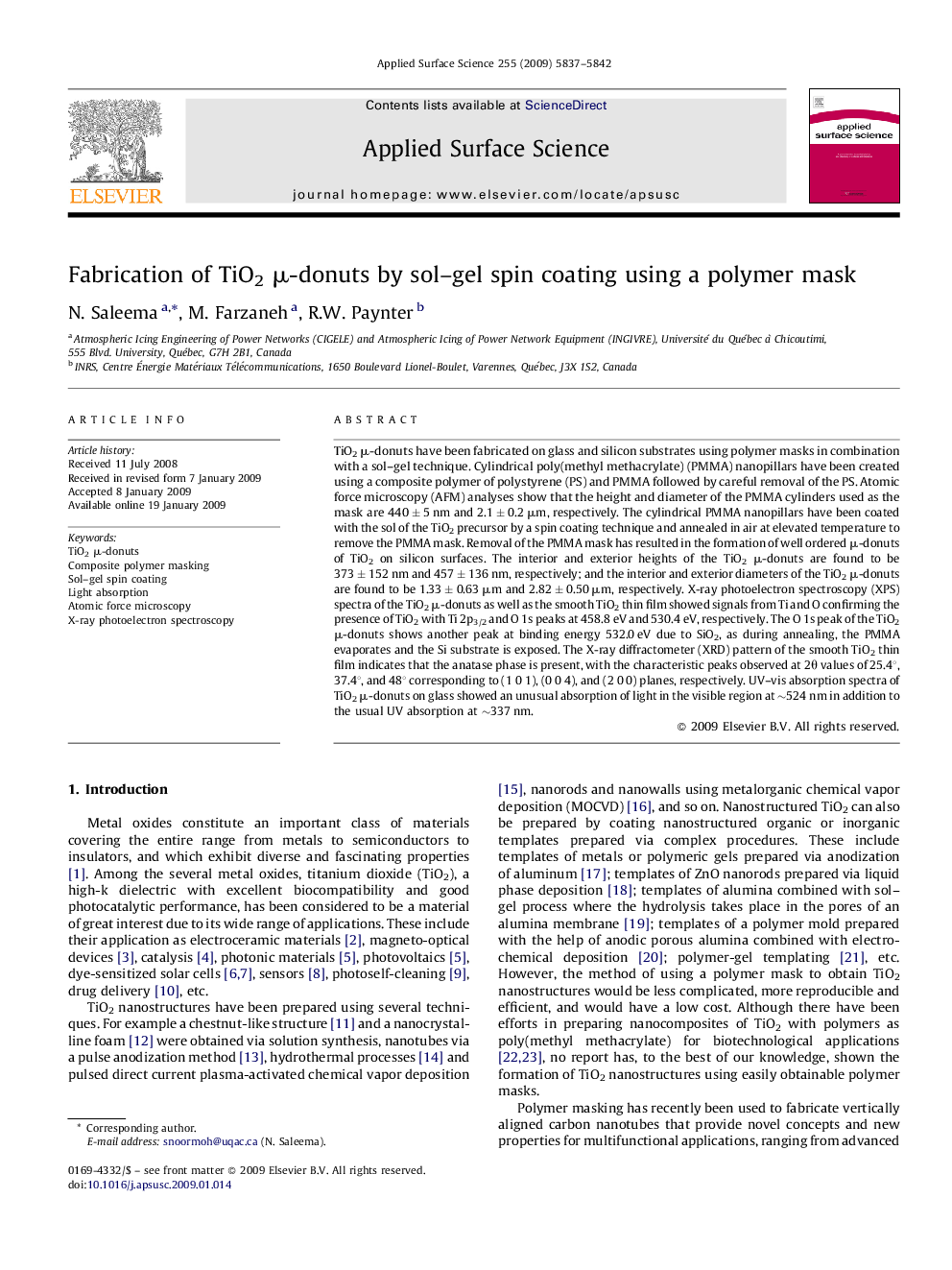| Article ID | Journal | Published Year | Pages | File Type |
|---|---|---|---|---|
| 5367284 | Applied Surface Science | 2009 | 6 Pages |
TiO2 μ-donuts have been fabricated on glass and silicon substrates using polymer masks in combination with a sol-gel technique. Cylindrical poly(methyl methacrylate) (PMMA) nanopillars have been created using a composite polymer of polystyrene (PS) and PMMA followed by careful removal of the PS. Atomic force microscopy (AFM) analyses show that the height and diameter of the PMMA cylinders used as the mask are 440 ± 5 nm and 2.1 ± 0.2 μm, respectively. The cylindrical PMMA nanopillars have been coated with the sol of the TiO2 precursor by a spin coating technique and annealed in air at elevated temperature to remove the PMMA mask. Removal of the PMMA mask has resulted in the formation of well ordered μ-donuts of TiO2 on silicon surfaces. The interior and exterior heights of the TiO2 μ-donuts are found to be 373 ± 152 nm and 457 ± 136 nm, respectively; and the interior and exterior diameters of the TiO2 μ-donuts are found to be 1.33 ± 0.63 μm and 2.82 ± 0.50 μm, respectively. X-ray photoelectron spectroscopy (XPS) spectra of the TiO2 μ-donuts as well as the smooth TiO2 thin film showed signals from Ti and O confirming the presence of TiO2 with Ti 2p3/2 and O 1s peaks at 458.8 eV and 530.4 eV, respectively. The O 1s peak of the TiO2 μ-donuts shows another peak at binding energy 532.0 eV due to SiO2, as during annealing, the PMMA evaporates and the Si substrate is exposed. The X-ray diffractometer (XRD) pattern of the smooth TiO2 thin film indicates that the anatase phase is present, with the characteristic peaks observed at 2θ values of 25.4°, 37.4°, and 48° corresponding to (1 0 1), (0 0 4), and (2 0 0) planes, respectively. UV-vis absorption spectra of TiO2 μ-donuts on glass showed an unusual absorption of light in the visible region at â¼524 nm in addition to the usual UV absorption at â¼337 nm.
